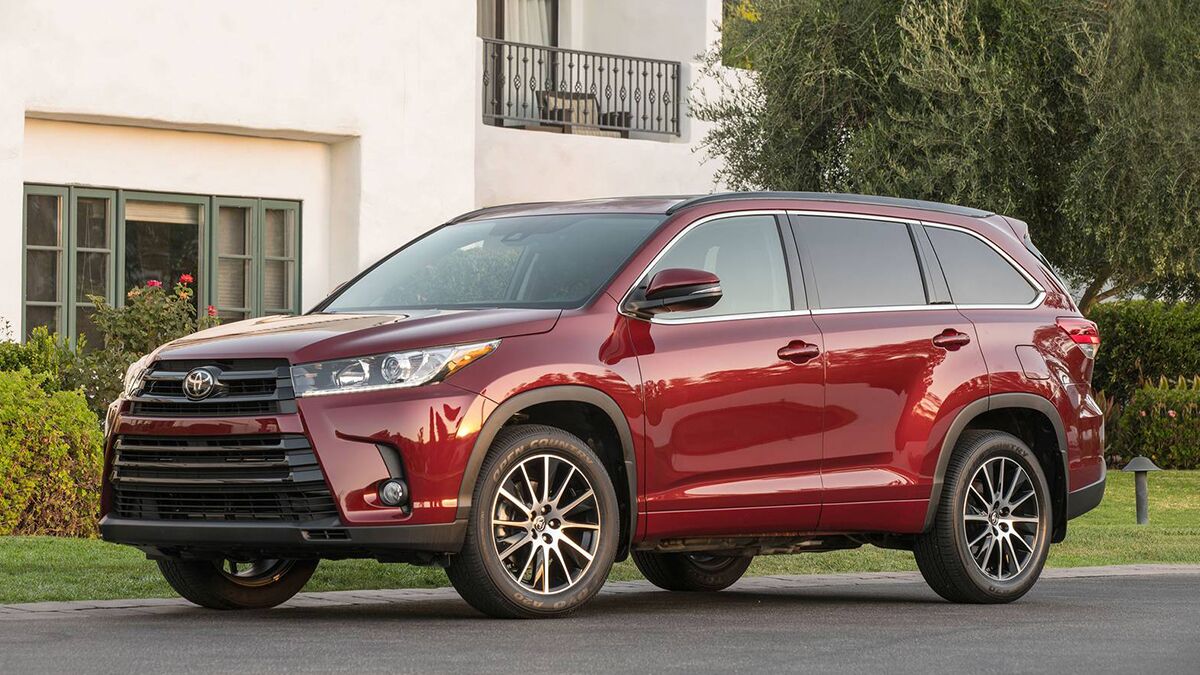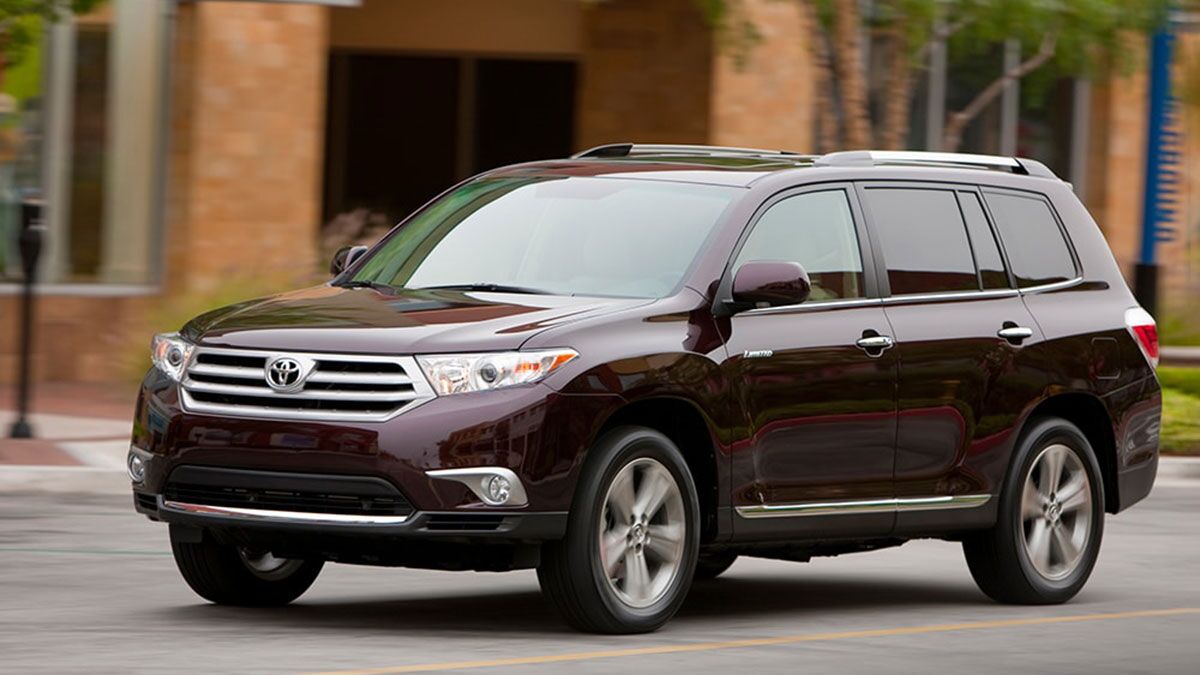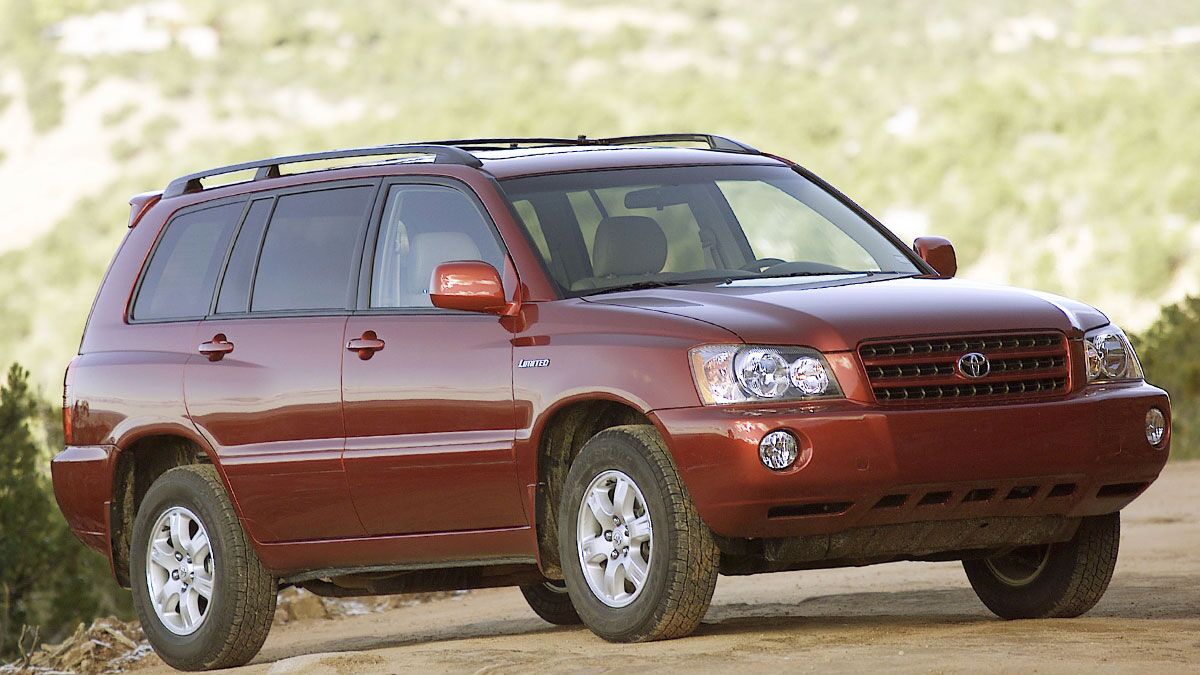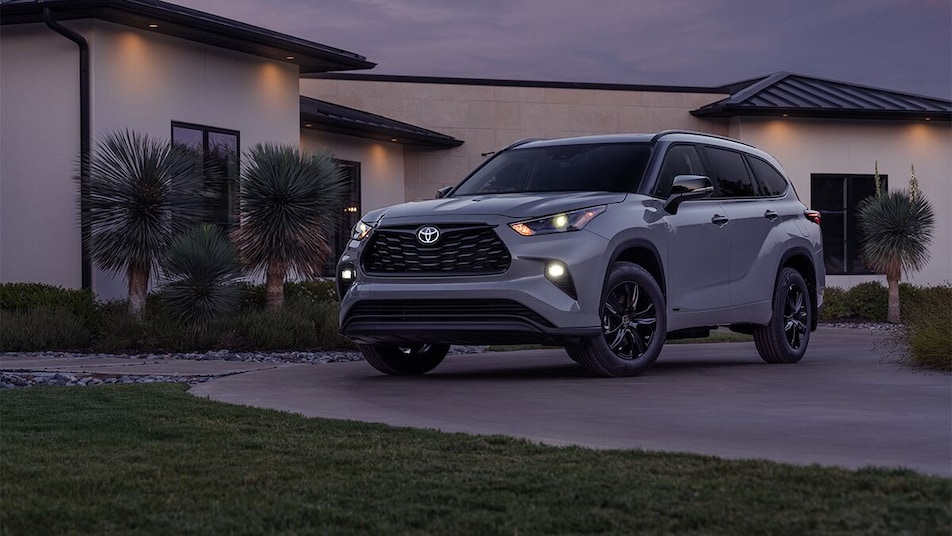Used Toyota Highlander Quick Facts
- The best used Highlander is probably a 2016 or 2019 model, followed by the 2010-2013 version.
- Launched in 2000, the Toyota Highlander is a midsize SUV known for its reliability, safety, and comfort.
- Third-generation models of this family-friendly SUV grow longer and wider. Seating increased to eight, with a sliding second row.
The Toyota Highlander holds a special place in the world of family SUVs. Its combination of safety, value, longevity, and comfort is unsurpassed, as are its numerous trim levels and engine configurations, including a hybrid model. With most models offering seating for up to seven and some later versions up to eight, the Highlander is the perfect antidote to the dreaded minivan. Suppose you’re looking for a solid family SUV with good fuel economy, a roomy cabin, and a reputation for years of trouble-free service and exceptional resale value. In that case, the Toyota Highlander deserves your full attention.
- What Is the Best Model-Year Used Toyota Highlander?
- Toyota Highlander by Generation: Which Trim Should You Buy?
- How Much Can the Toyota Highlander Tow?
- Does the Toyota Highlander Offer a Hybrid Engine?
- Can the Toyota Highlander Go Off-Road?
- What Are the Most Reliable Years for the Toyota Highlander?
- What Are the Least Reliable Years for the Toyota Highlander?
What Is the Best Model-Year Used Toyota Highlander?
If you’ve got a sizable budget but wouldn’t mind trimming off the immediate depreciation that happens when you drive a new car off the lot, a 2022-2025 Toyota Highlander is a good choice. To date, there have only been some minor issues with things like glitchy touchscreens and rough transmission shifting, all fixed with an update to the vehicle’s onboard computer.
If you’re going for something older, a 2016-2019 third-generation is a good choice. Again, these years have a strong history of reliability and longevity, although some early V6s had issues with excessive oil consumption.
Even the second- and first-generation Highlanders hold up better than just about everything else in their segment. Still, at this age, you’ll want a mechanic to perform a thorough inspection and set a little cash aside for typical wear and tear items, like brakes, tires, suspension components, and engine accessories.
See used Toyota Highlander SUVs near you.
Toyota Highlander by Generation: Which Trim Should You Buy?
Fourth Generation: 2020-Present
The fourth-generation Highlander makes several improvements over the model it replaces. There’s more interior space and a better infotainment setup featuring Apple CarPlay and Android Auto, larger touchscreen options, an available digital rearview mirror camera, and more places to recharge devices. You’ll find more standard safety systems, part of the Toyota Safety System (TSS) suite that includes adaptive cruise control, traffic sign recognition, lane departure warning, and automatic high-beam headlights. Additional safety systems like a blind-spot monitor and rear cross-traffic assist show up on more trims, and the standard content improves across six possible trim choices: L, LE, XLE, XSE, Limited, and Platinum.
The 2020 model debuts with a 295-horsepower V6, which Toyota replaces in 2023 with a turbocharged 4-cylinder providing less horsepower but more torque. One of the biggest stories of the fourth-generation Highlander is that the old, underpowered 4-cylinder base engine is no more.
At this time, a new Highlander Hybrid also debuts. It’s quite a bit more efficient than the previous Highlander Hybrid, achieving up to 36 mpg (36 city/35 highway mpg) in mixed driving, which is outstanding for an SUV of its size. All-wheel drive (AWD) is no longer standard on the Highlander Hybrid but is optional and still super-efficient.
Toyota added the Grand Highlander to its product mix in 2024. We discuss it further below. Since the fourth-gen Highlander is still pretty new, used examples aren’t a whole lot cheaper than new ones. That said, it’s still worth keeping an eye out for a used 2020 or newer Highlander if you want a modern family crossover at a discount compared to a new one.
Model-Year Changes:
2025: The XSE trim gains a digital gauge cluster.
2024: Toyota drops the base L trim.
2023: Toyota drops the V6 in favor of a new turbocharged 4-cylinder engine. XSE and XLE trims gain a hands-free power liftgate, while the Limited and Platinum trims get a new 12.3-inch touchscreen.
2022: No significant changes.
2021: New features include an upgraded Safety Sense driver assist suite, LED projector headlights, and the new XSE trim level.
2020: Apple CarPlay arrives (but not Android Auto).
See 2020 to current Toyota Highlander SUVs near you.
Third Generation: 2014-2019

For 2014, the Highlander grows larger and more sophisticated. Longer and wider than the second-generation Highlander, the third-generation model discovers a new sense of style, with long sweeping lines and a more dynamic front end. The interior quality is noticeably better on these models, with lots of soft-touch surfaces and elegant trim.
The Highlander’s passenger count increases to eight, with a sliding second-row seat and new driver assists such as lane departure warning, blind-spot monitoring, adaptive cruise control, forward emergency braking, and automatic high beams, although initially only offered on the Limited and Limited Platinum trims. After 2017, these features become standard on all trims.
The base engine remains a 185-hp 2.7-liter 4-cylinder, which comes standard on the front-wheel-drive (FWD) LE trim. A 270-hp 3.5-liter V6 is optional on the LE and standard on the LE Plus, XLE, Limited, and Limited Platinum. The Hybrid Limited and Hybrid Limited Platinum employ the same V6 and electric motor combination as the previous generation. In mixed city-and-highway driving, the Highlander Hybrid’s fuel economy is a respectable 27 mpg (27 mpg city/28 mpg highway).
The base Highlander LE comes nicely equipped, including a rear backup camera, 18-inch alloy wheels, heated side mirrors, 8-passenger seating, and Bluetooth. Moving up to the top-of-the-line Limited Platinum nets a panoramic moonroof, a heated steering wheel, heated second-row captain’s chair seating, and a full suite of driver assists. Clever features for the Highlander included a flip-up rear liftgate window, a Blu-ray DVD rear entertainment system with a 9-inch screen, and Driver Easy Speak, which allows parents to communicate with unruly children in the third-row seat.
In 2016, the Limited Platinum gained rain-sensing wipers. In 2017, the Highlander received a minor facelift, a new 8-speed automatic transmission for the V6-powered models, and the addition of the Toyota Safety Sense-P driver-assist suite. The V6 also gets a revised fuel-injection system and a bump in output to 295 hp, while the hybrid powertrain gets expanded to some of the less expensive trims.
Model-Year Changes:
2019: Some minor styling changes.
2018: No significant changes.
2017: Toyota significantly refreshes the Highlander, with a new face, a larger grille, and a more powerful V6 engine available. A new 8-speed automatic transmission replaces the previous 6-speed. Also new is the SE trim, while the Safety Sense Plus driver-assist suite is made standard across the line.
2016: Toyota adds a tow package to the standard equipment roster.
2015: No significant changes.
See 2014-2019 Toyota Highlander SUVs near you.
Second Generation: 2008-2013

Arriving in 2008, a redesigned Highlander is considerably larger than the original, with more power and features, such as a standard 3.5-liter V6 engine, a telescopic steering wheel, and a flip-up glass window built into the rear liftgate. Trim levels included base, Sport, and Limited, with all-wheel drive an option. The Highlander Hybrid also carries over but retains the old 3.3-liter V6 until 2011.
Standard features for the second-generation Toyota Highlander include power mirrors, air conditioning, a stowable second-row middle seat, 17-inch alloy wheels, power windows, and power door locks. Available options vary by trim, including leather seating, a power liftgate, JBL audio, navigation, a power sunroof, and Bluetooth. Electronic traction and stability control are standard, as are seven airbags, including a driver’s-knee and side-curtain airbags.
It should be noted that the 2008-2010 models are part of Toyota’s massive recall related to the mysterious unintended acceleration incidents on some of its cars. The recall required the dealer to install a new accelerator pedal. Other than this, owner complaints are few, mostly pertaining to less than claimed fuel economy on the 4-cylinder cars, issues with the CD changers failing, difficulties pairing certain cell phones with Toyota’s Bluetooth, and some odd vibrations upon startup.
People who tried pushing the all-wheel-drive, hybrid models to do prolonged off-road adventures (such as plowing through sand) soon found the electric motors would overheat and shut down. Owners with higher mileage Highlander SUVs have reported a clunking or popping sound when turning the steering wheel, which turned out to be a relatively common issue with the intermediate steering shaft, a repair that can run anywhere from $500 to $900.
Model-Year Changes:
2013: Toyota shuffles some standard equipment and trim packages.
2012: No significant changes.
2011: A minor refresh includes new front and rear styling, expanded availability of the 4-cylinder engine, and standard 3-row seating with rear seat climate controls. The hybrid model ditches the old 3.3-liter V6 for a 3.5-liter engine.
2010: The base 4-cylinder model offers an optional power sunroof, while the base V6 provides a rear backup camera.
2009: The base trim gets a new 2.7-liter 4-cylinder engine.
See 2008-2013 Toyota Highlander SUVs near you.
First Generation: 2000-2007

The original Highlander offers 3-row seating in a smaller package than the generations that followed. Based on the Toyota Camry platform, the first-gen Highlander provides a more car-like ride and taut handling. Four-cylinder and 6-cylinder engine choices can be paired with all-wheel drive. Highlights for the original Highlander include an optional third-row seat, heated front seats, JBL audio, touchscreen DVD navigation, 2-row side-curtain airbags, and leather upholstery.
In 2004, the Highlander sports a more powerful 3.3-liter V6 mated to a new 5-speed automatic. Also, this year, the option of a 2-passenger third-row seat is new, a feature that increases the Highlander’s seating capacity to seven, although admittedly, the seat is only fit for small children. A sliding second-row seat makes accessing the rear-most seat much easier, but many owners complain of greatly diminished cargo space with the third row in place. After 2004, vehicles not equipped with the third row have the storage well converted to a cargo compartment, with the spare tire accessed from beneath the car. The Highlander Hybrid joined the team in 2006, offering a 3.3-liter V6 paired with a hybrid electric motor. All-wheel-drive versions come with Toyota’s 4WD-I system, which uses two electric motors to power the rear wheels.
For the most part, the first-gen Highlander SUVs suffer very few complaints. Those who bought the all-wheel-drive hybrid models quickly learned the system was designed for use only on paved roads, discovering the electric motors would overheat and shut down during extreme off-road situations.
Toyota later issued a recall due to poorly soldered transistors in the Intelligent Power Module controlling the system. Some 2001 and 2002 V6 engines overheated due to a buildup of oil sludge in the engine. Issues for used buyers include remembering to change the V6’s timing belt every 90,000 miles and issues with a check engine light related to a clogged charcoal canister (part of the emissions system) that can be quite costly to replace.
See 2000-2007 Toyota Highlander SUVs near you.
Toyota Grand Highlander
Still considered a midsize SUV, the Grand Highlander joined the Highlander family in 2024. With a 4-inch longer wheelbase, the Grand Highlander is more than six inches longer overall than the Highlander. It’s wider and taller, too. However, the Grand Highlander isn’t simply an enlarged Highlander. It uses a different platform, and its exterior styling is distinctive enough that most people won’t confuse the two. Sourcing its thrust from the Highlander’s turbo 4-cylinder, it features the same drivetrain. However, one significant difference for families is that, with the optional second-row bench seat, the Grand Highlander can seat up to eight rather than the maximum of seven in the Highlander.
Toyota’s primary purpose for the Grand Highlander exercise is to provide more cargo space and rear-seat legroom. Here’s how those numbers match up:
| Model | Toyota Highlander |
Toyota Grand Highlander |
Front-Row Legroom |
42.0 inches |
41.7 inches |
Second-Row Legroom |
38.7 inches |
39.5 inches |
Third-Row Legroom |
28.0 inches |
33.5 inches |
Cargo Room Behind Front Row |
84.3 cubic feet |
97.5 cubic feet |
Cargo Room Behind Second Row |
48.4 cubic feet |
57.9 cubic feet |
Cargo Room Behind Third Row |
16.0 cubic feet |
20.6 cubic feet |
How Much Can the Toyota Highlander Tow?
The non-hybrid third and fourth-generation Highlander SUVs can pull up to 5,000 pounds when equipped with the factory tow package. Hybrid models are limited to 3,500 pounds, and the old 4-cylinder was limited to 1,500 pounds.
The second-generation V6 is also rated up to 5,000 pounds properly equipped, with the hybrid at 3,500 pounds and the 4-cylinder at 2,000. The first-generation Highlander’s tow rating is capped at 3,500 pounds.
Does the Toyota Highlander Offer a Hybrid Engine?
The second-, third-, and fourth-generation Highlander SUVs all offer the option of a hybrid engine.
See Toyota Highlander hybrid SUVs near you.
Can the Toyota Highlander Go Off-Road?
The Toyota Highlander was born to give growing families an alternative to bland minivans, and this larger SUV boasts plenty of safety features that those owners want. At the same time, the vehicle offers ample interior space for some camping gear and towing capacity for a small trailer when properly equipped. The best Highlander quality for many drivers is its ground clearance, which provides a smoother ride for family adventures, including light off-road driving. However, the hybrid model is not recommended for extended off-road use as its rear electric motors are not as robust as a mechanical differential.
What Are the Most Reliable Years for the Toyota Highlander?
It’s hard to go wrong with the Toyota Highlander regardless of your chosen year. The 2020 through current model years have an excellent reputation with very few complaints. The third generation might be the sweet spot, offering modern features like adaptive cruise control, Apple CarPlay (2020), and automatic emergency braking at an affordable price.
Next in line is the 2008-2013 version, which offers generous interior space, plentiful features, and a powerful engine lineup, plus exceptional safety and crash test scores. Although the Highlander holds its value well, you should be able to find a low-mileage 2010-2013 Highlander Limited for around $20,000 and one of the lower trims for even less.
The first-generation models will likely be the most affordable but also have the highest mileage. The cabin is snug and lacks important features like a tilt-and-telescoping steering wheel.
If you choose models older than six years, a private-party sale may be advantageous, both for the ability to negotiate a better price and for the possibility that the owner kept meticulous repair and maintenance records. A car only a few years old might be better bought from a dealer that can provide an inspection and some type of warranty, as found on certified pre-owned (CPO) cars.
What Are the Least Reliable Years for the Toyota Highlander?
We suggest steering clear of the 2001 and 2006 models. The V6 requires timing belt changes and has issues related to replacing costly clogged charcoal canisters and oil sludge. Some early hybrid models faced a recall for overheating electric motors when off-roading.
The 2014 and 2020 models also suffer from first-year glitches, such as problems with the infotainment touchscreen, rough shifting transmissions, and some initial build quality complaints.
See Toyota Highlander SUVs near you.
Editor’s Note: This article has been updated since its initial publication.












Typo in “ Toyota Highlander 4th generation, which launched in 2000” should it be 2015
Thanks for reading, and we appreciate you having a keen eye! We have fixed the incorrect dates.